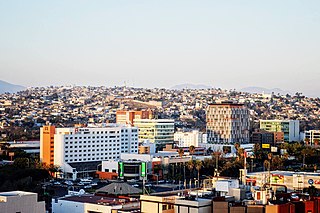
Tijuana is the largest city of both Baja California State and the Baja Peninsula. It is part of the San Diego–Tijuana transborder urban agglomeration and the larger Southern California megalopolis. As the 6th-largest city in Mexico and center of the 6th-largest metro area in Mexico, Tijuana exerts a strong influence in education and politics – across Mexico, in transportation, culture and art – across all three Californias, and in manufacturing and as a migration hub – across the North American continent. Currently one of the fastest-growing metropolitan areas in Mexico, Tijuana maintains global city status. As of 2015, the city of Tijuana had a population of 1,641,570.
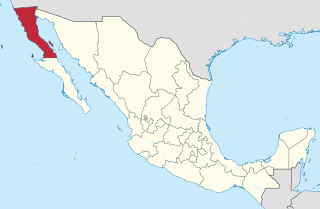
Baja California, officially the Free and Sovereign State of Baja California, is a state in Mexico. It is the northernmost and westernmost of the 32 Federal Entities of Mexico. Before becoming a state in 1952, the area was known as the North Territory of Baja California. It has an area of 70,113 km2 (27,071 sq mi), or 3.57% of the land mass of Mexico and comprises the northern half of the Baja California Peninsula, north of the 28th parallel, plus oceanic Guadalupe Island. The mainland portion of the state is bordered on the west by the Pacific Ocean, on the east by Sonora, the U.S. state of Arizona, and the Gulf of California, and on the south by Baja California Sur. Its northern limit is the U.S. state of California.

Mexicali is the capital city of the Mexican state of Baja California and seat of the Municipality of Mexicali. The City of Mexicali has a population of 689,775, according to the 2010 census, while the population of the entire metropolitan area reaches 996,826; making the city and metropolitan area the second most populous in Baja California.

Ensenada is a coastal city in Mexico, the third-largest in Baja California. Lying 125 kilometres (78 mi) south of San Diego on the Baja California Peninsula, it is locally referred to as La Cenicienta del Pacífico, "The Cinderella of the Pacific".
Chinatowns in Latin America developed with the rise of Chinese immigration in the 19th century to various countries in Latin America as contract laborers in agricultural and fishing industries. Most came from Guangdong Province. Since the 1970s, the new arrivals have typically hailed from Hong Kong, Macau, and Taiwan. Latin American Chinatowns may include the descendants of original migrants — often of mixed Chinese and Latino parentage — and more recent immigrants from East Asia. Most Asian Latin Americans are of Cantonese and Hakka origin. Estimates widely vary on the number of Chinese Descendants in Latin America but it is at least 1.4 million and likely much greater than this.

Tecate is a city in Baja California, Mexico, and the municipal seat of Tecate Municipality. It is on the border with Tecate, California, United States and is part of the San Diego–Tijuana metropolitan area. There is a small port of entry between the sister cities that serves as an alternative to the bustling ports of entry in Tijuana. As of 2015, the city of Tecate had a population of 72,860 inhabitants, while the metropolitan area has a population of 102,406 inhabitants. The city sits at an elevation of 1,770 feet (540 m) above sea level.
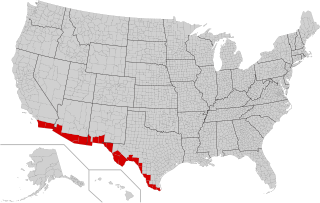
The Mexico–United States border is an international border separating Mexico and the United States, extending from the Pacific Ocean in the west to the Gulf of Mexico in the east. The border traverses a variety of terrains, ranging from urban areas to deserts. The Mexico–United States border is the most frequently crossed border in the world, with approximately 350 million documented crossings annually.
Mixtec transnational migration is the phenomenon whereby Mixtec people have migrated between Mexico and the United States, for over three generations.

Over the centuries, Mexico has received immigrants from Europe, the Americas, and from Asia to the lesser extent. Today, millions of their descendants still live in Mexico and can be found working in different industries. According to the 2010 National Census, there are 961,121 foreign-born people registered with the government as living in Mexico, the majority of whom are US citizens. This is almost double the 492,617 foreign-born residents counted in the 2000 Census. According to the intercensal estimate conducted in 2015, the foreign-born population was 1,007,063. In 2017, the UN DESA Population Division gave a foreign born population in Mexico of 1,224,169. Unofficial estimates put the total number of foreigners in Mexico closer to four million. More than 45,000 migrants from Central America were deported from Mexico between January and April 2019.
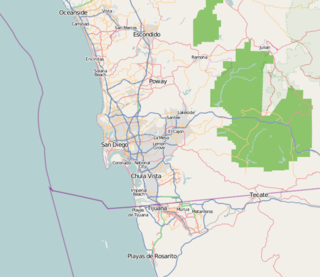
San Diego–Tijuana is an international metropolitan conurbation, straddling the border of the adjacent North American coastal cities of San Diego, California, United States and Tijuana, Baja California, Mexico. The 2012 population of the region was 4,922,723, making it the largest bi-national conurbation shared between the United States and Mexico, the second-largest shared between the US and another country, and the fourth largest in the world. In its entirety, the region consists of San Diego County in the United States and the municipalities of Tijuana, Rosarito Beach, and Tecate in Mexico. It is the third most populous region in the California–Baja California region, smaller only than the metropolitan areas of Greater Los Angeles and the San Francisco Bay Area.

Haiti has a sizable diaspora, present chiefly in the Dominican Republic, the United States, Canada, Cuba, the Bahamas, and France. They also live in other countries like Belgium, Jamaica, Turks and Caicos, Mexico, U.S. Virgin Islands, Brazil and Chile, among others.

Prostitution in Mexico is legal under Federal Law. Each of the 31 states enacts its own prostitution laws and policies. Thirteen of the states of Mexico allow and regulate prostitution. Prostitution involving minors under 18 is illegal. Some Mexican cities have enacted "tolerance zones" which allow regulated prostitution and function as red light districts. In Tuxtla Gutiérrez, capital of the state of Chiapas, there is a state-run brothel at the Zona Galáctica. In most parts of the country, pimping is illegal, although pimp-worker relationships still occur, sometimes under female pimps called "madrotas". The government provides shelter for former prostitutes.
Emigration from Mexico is the movement of people from Mexico to other countries. The top destination by far is the United States, by a factor of over 150 to 1 compared to the second most popular destination, Canada.

The 2010 Baja California earthquake occurred on April 4 with a moment magnitude of 7.2 and a maximum Mercalli intensity of VII. The shock originated at 15:40:41 local time south of Guadalupe Victoria, Baja California, Mexico.

The Imperial Fault Zone is a system of geological faults located in Imperial County in the Southern California region, and adjacent Baja California state in Mexico. It cuts across the border between the United States and Mexico.
Gerardo Mauricio Chavez Montaño, also Mauricio Chavez, is the President of the Bomberos de Mexicali basketball team of the CIBACOPA Pacific Circuit of Mexican Basketball.
Lebanese Mexicans refers to Mexican citizens of Lebanese origin.

La Mesa is a borough of the municipality of Tijuana in Baja California, Mexico.
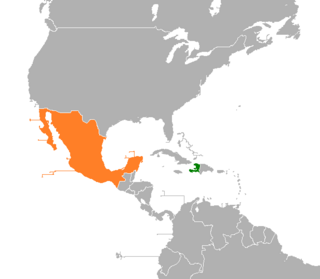
Haiti–Mexico relations refers to the diplomatic relations between Haiti and Mexico. Both nations are members of Association of Caribbean States, Community of Latin American and Caribbean States, Organization of American States and the United Nations.
Same-sex marriage became legal in the Mexican state of Baja California on 3 November 2017. On that day, the State Government announced that it would cease to enforce its same-sex marriage ban and that the Civil Registry would begin accepting applications for marriage licenses by same-sex couples. This was in line with jurisprudence established by the Mexican Supreme Court, which has ruled that same-sex marriage bans are unconstitutional. Additionally, same-sex couples are allowed to adopt in the state. However as of 2019, Mexicali the second most populous municipality in the state is still not allowing same-sex marriage.




















